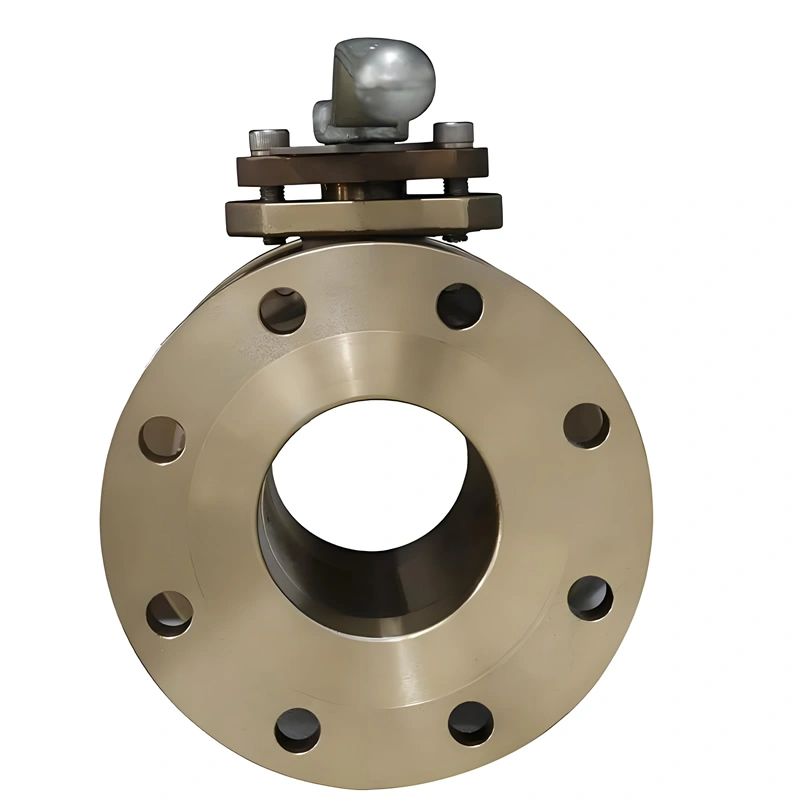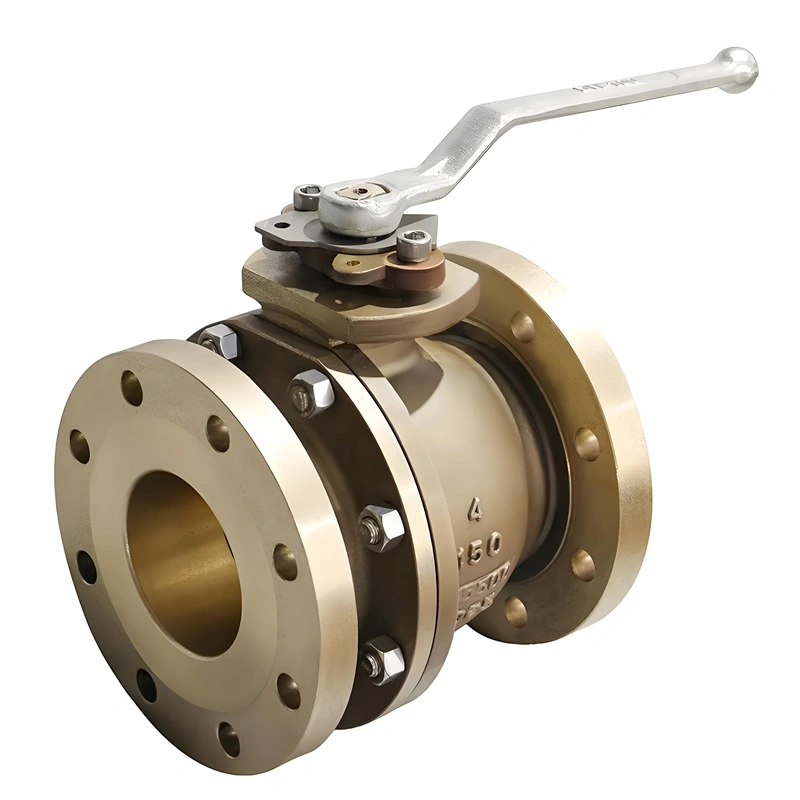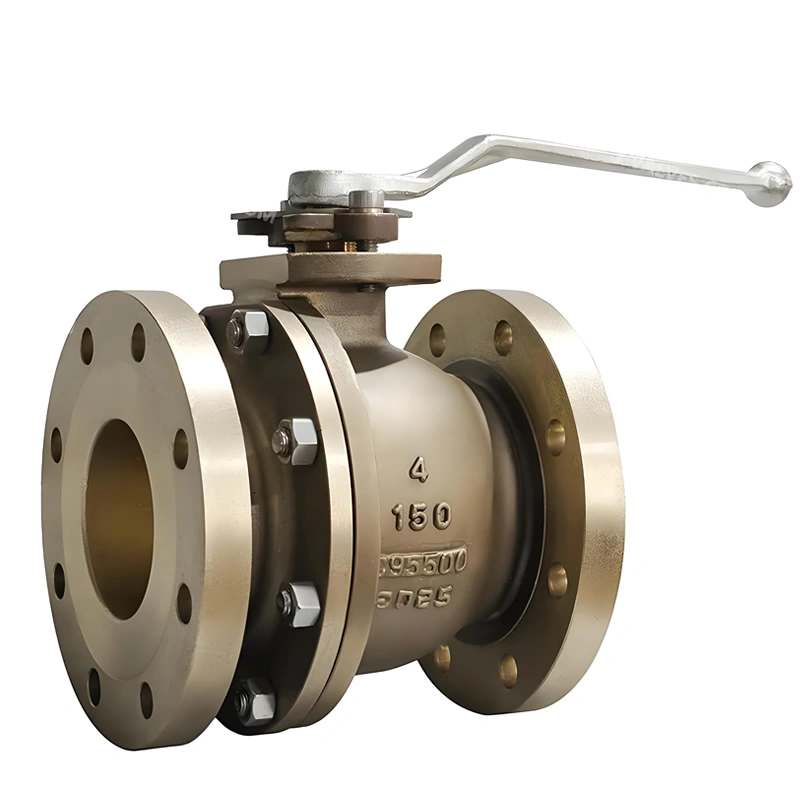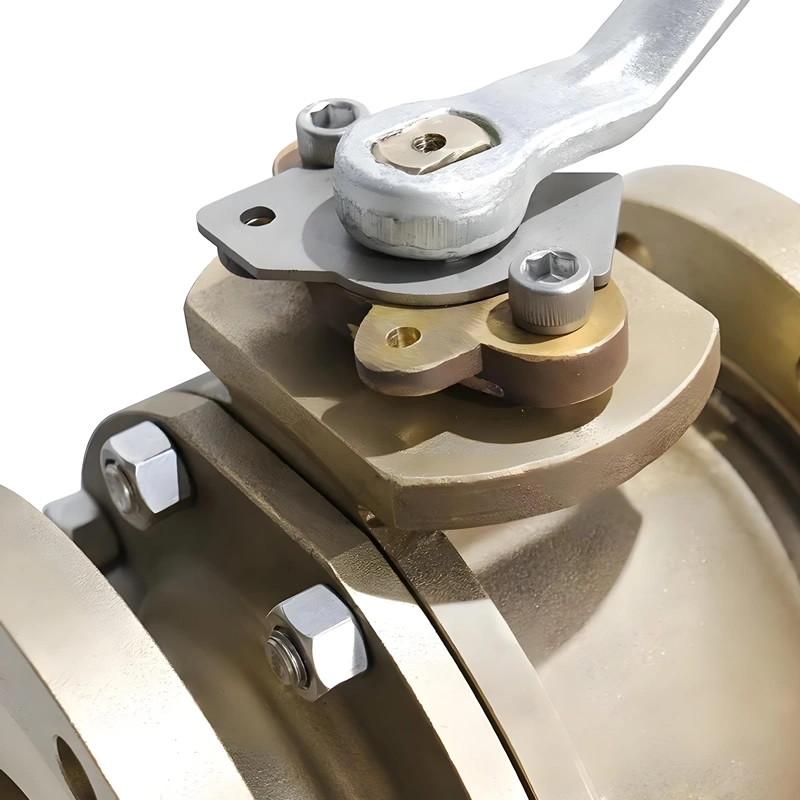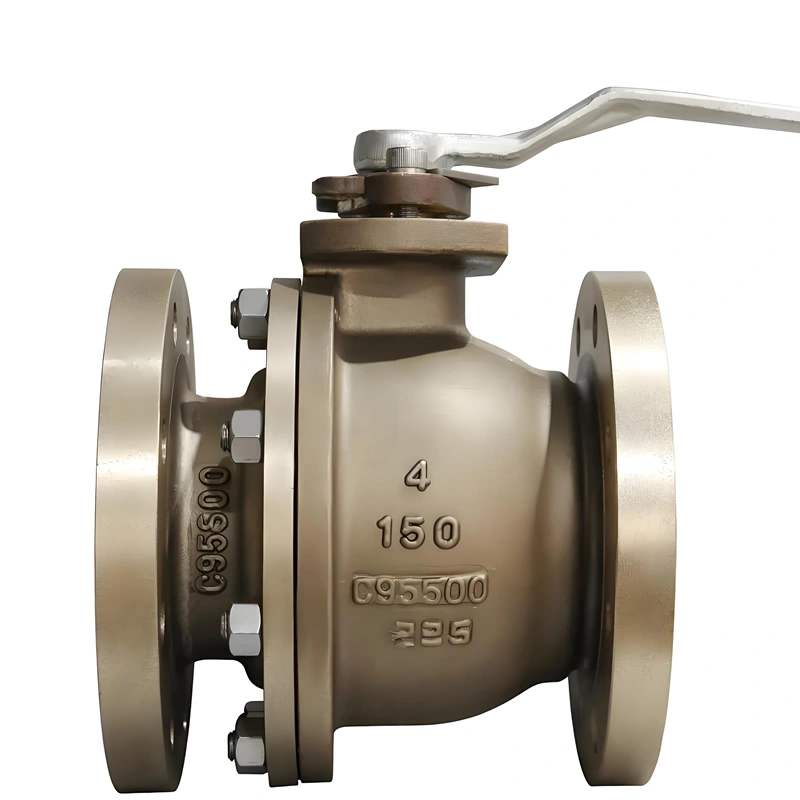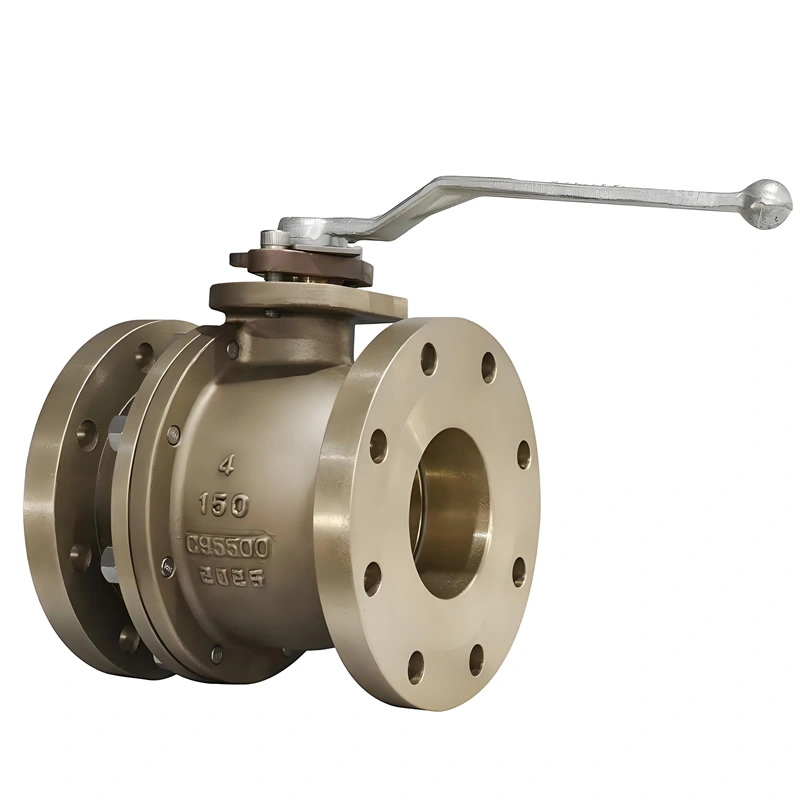- 1/2″-24″(DN15-DN600)
- Flange
- Manual,Electric,Pneumatic
- 150lb-1500lb
- Straight Through Type
- Floating Ball Valve
- API 6D, API 608, BS 5351/DIN3357/JIS B2071
- C95500
- API 6D / API 608 / BS5351/ASME B16.34
- PTFE, PTFE+Carbon Fiber, PTFE+Glass Fiber, Ppl
Specification
1/2″~24″ 150LB~2500LB Aluminum Nickel Bronze C95500 2PC Full Bore Flanged Floating Ball Valve
|
Product Name |
Aluminum Nickel Bronze C95500 2PC 4” Full bore Flanged Floating Ball Valve |
|
Material |
Stainless Steel/Duplex steel/Aluminium Bronze/Nickel-aluminum Bronze/Titanium Alloy, etc. |
|
Size |
1/2″-24″(DN15-DN600) |
|
Port |
Full Port/Reduce Port |
|
Working Pressure |
150LB-2500LB |
|
Connection Ends |
Flanged FF/RF/Rtj, Bw Ends |
|
Working Temp. |
-27ºC~220ºC |
|
Suitable Medium |
Water, Natural Gas, Oil and some corrosive liquid |
|
Operated |
Hand wheel, Worm wheel, Pneumatic actuator & Electric Actuator. |
|
Design standard |
ISO 5208, API 6D |
|
Inspection & Testing |
According to API598 |
I. Product Overview
Newway aluminum nickel bronze C95500 2PC full bore flanged floating ball valve is a high-performance flow control solution engineered for harsh industrial environments. Crafted with C95500 aluminum nickel bronze—renowned for corrosion resistance and mechanical strength—it features a two-piece structure, full bore design, and flange connection to ensure reliable on-off control of water, oil, gas, and mild corrosive media. Operating at -27℃~220℃ and 150LB~2500LB pressure, it leverages a floating ball design (sealing via media pressure) to balance tight shut-off and durability. Compliant with API 6D, API 608, and ASME B16.34 standards, it is ideal for marine, oil & gas, water treatment, and chemical industries where corrosion resistance and high-pressure performance are critical.
II. Key Attribute Parameters
Size Range: 1/2″~24″ (DN15~DN600), covering small to large-diameter pipelines for diverse flow control needs.
Pressure Range: 150LB~2500LB (2.0MPa~42.0MPa), adapting to low to ultra-high pressure systems such as offshore oil lines and high-pressure gas pipelines.
Temperature Range: -27℃~220℃, with C95500 retaining toughness in cold environments and resisting oxidation at high temperatures.
Material Configuration:
Body & Ball: C95500 aluminum nickel bronze (含 Al 9~11%, Ni 4~5%), offering superior corrosion resistance to saltwater and chemicals.
Seat: PTFE, PTFE+carbon fiber, or PPL—PTFE for general media, reinforced variants for high pressure/temperature.
Stem: C95500 or stainless steel 316, with anti-blowout design to prevent ejection under pressure.
End Connections: Flanged (FF/RF/RTJ) per ASME B16.5, ensuring leak-tight integration with pipelines.
Actuation: Manual (handwheel/worm wheel), pneumatic, or electric—manual for simple on-off, automated options for remote control.
Design & Test Standards: Design follows API 6D, API 608; testing complies with API 598, with hydrostatic strength tests at 1.5×rated pressure.
Product Overview
III. Features Description
C95500 Corrosion Resistance: Aluminum nickel bronze forms a dense oxide layer, resisting saltwater corrosion (marine environments) and chemical erosion (acids, alkalis). This outperforms stainless steel in coastal or offshore applications, avoiding rust-related jamming.
2PC Structure & Full Bore: The two-piece body (bolted connection) balances structural strength and maintenance accessibility—internal components can be inspected without full disassembly. Full bore design matches pipeline diameter, minimizing pressure drop and enabling unobstructed media flow (critical for viscous oil or slurry).
Floating Ball Sealing: The ball “floats” against the seat under media pressure, ensuring uniform sealing contact. This self-adjusting design compensates for minor pipeline misalignment, achieving ANSI/FCI Class VI leakage (near-zero) even under pressure fluctuations.
Versatile Seating Options: PTFE seats handle general media (-27℃~180℃), while PTFE+glass fiber or PPL seats extend service to 220℃ and high pressure (2500LB), adapting to steam or hot oil applications.
Flange Compatibility: RF/RTJ flanges comply with ASME B16.5, fitting seamlessly into global pipelines. RTJ flanges are ideal for high-pressure systems (900LB+), preventing leakage in gas or oil transmission.
IV. Manufacturing Processes
Material Validation: C95500 castings undergo spectral analysis to verify alloy content (Al, Ni, Cu) and ultrasonic testing to detect internal defects. Charpy impact tests confirm toughness at -27℃.
Precision Casting: The body and ball are investment-cast to achieve tight tolerances (±0.05mm), ensuring the ball rotates smoothly without jamming. Cast surfaces are sandblasted to remove impurities.
CNC Machining: Ball and seat sealing surfaces are CNC-ground to Ra ≤0.8μm, ensuring uniform contact. Flange faces are machined to ASME B16.5 dimensions, with bolt holes aligned to ±0.5mm for easy installation.
Assembly & Testing:
Hydrostatic Test: Body tested at 1.5×rated pressure (e.g., 3.0MPa for 150LB) for 30 minutes; seat tested at 1.1×rated pressure with water to confirm no leakage.
Air Leak Test: 0.6MPa air test ensures stem packing and flange gaskets are leak-tight.
Operation Test: 100+ open/close cycles verify smooth rotation, with focus on floating ball sealing under pressure.

